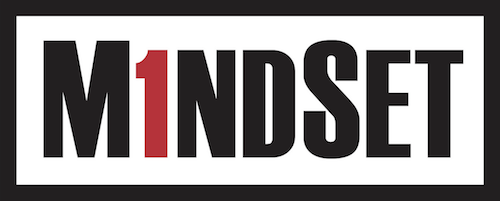One of the core aspirational goals we encourage our clients to adopt is the following: Every employee will report to an outstanding supervisor. Easy to say; not so easy to do. Let’s take a quick look at what takes.
It starts by selecting the right people to be promoted into a supervisory role. We help our clients improve selection through our BetterCulture 22© listing of supervisor traits – characteristics that are particularly easy to recognize when we promote from within the ranks of current employees.
The second step is to provide supervisors with high quality leadership training. We often find that companies spend more time making sure supervisors know how to correctly fill out a schedule, a budget request, or complete an evaluation form than they do in training their supervisors how to effectively lead humans. That is more than a small oversight. We offer the MindSet Leadership Program© to achieve this goal.
But there is a third consideration that I want to address today. One of the most useful things you can do to help ensure that every employee will report to a good supervisor is to examine your line and staff chart.
Span of Control
The term “span of control” refers to how many direct reports a supervisor oversees. A wide span of control suggests that a supervisor has a larger number of direct reports to oversee. A narrow span of control suggests a supervisor has relatively fewer direct reports. When companies adopt wide spans of control, they are said to have flat structures. When companies adopt narrow spans of control, they are said to have tall structures. These structures can be diagrammed in what are called line and staff charts.
If you accept the challenge of giving every employee the opportunity to report to an outstanding supervisor, the obvious challenge becomes finding enough individuals who will be an outstanding supervisor.
Let’s assume we have a company with 250 employees. If your average span of control is 6 (which would be a narrow span of control creating a tall line and staff chart) you will need to find and train 42 individuals who can be an outstanding supervisor.
Alternatively, if that same company of 250 employees has an average span of control of 14 (which would be a wider span of control creating a flatter line and staff chart), you will need to identify and train 18 individuals who can be an outstanding supervisor.
That difference is stark. Finding 42 individuals who can successfully take on supervision constitutes 17% of your entire workforce; finding 18 individuals constitutes only 7% of your workforce. Think of identifying your potential supervisors as football players being selected in the draft. The lower we go on our draft board the less talented the players will be. If we are appointing supervisors from a pool of 250, there is no doubt that the top 18 we would select will be substantially stronger on average than the next 24 we would have to select to get to a total of 42.
Yet there are noteworthy advantages to a narrower span of control. As we often remind clients, this “leadership stuff” takes some time! The result is that it takes more time to supervise 14 people than it does to supervise 5. So when key players are given a larger span of control, it takes away from their ability to focus on their own tasks. For example, if you have a Chief Technology Officer who is personally responsible for doing vitally important work, it may be unwise to burden them with a large number of direct reports.
A solution that we found many years ago at QLI, and it is a solution that more companies should consider, is to make a clearer distinction between being given power to lead a process, procedure, or projects and being given power to lead people. Technical knowledge and expertise are usually required for the former; social and interpersonal acumen are required for the latter.
A real-world example from my time at QLI might be helpful. In many similar facilities, direct care staff members are supervised by nursing staff. It is often a challenge to find outstanding nurses, a challenge that is made close to impossible when you also have to find outstanding nurses who also have the desire, time, and ability to lead humans.
Given the objective of having every employee report to an outstanding supervisor, we realized that we needed to separate the power that was given to nurses to control process from a responsibility to supervise personnel. Instead, we hired and trained individuals who had the specific leadership skill sets we were looking for to help our direct care staff members find greater success at work and in life.
Nurses continued to have great power with respect to how we processed care. For example, if one of our newest nurses indicated to the CEO that they could not or should not enter a given area because of medical concern, that nurse had the power to enforce that decision.
But when it came to coaching direct care employees, determining appropriate compensation, handling disciplinary actions, or assigning staff members to specific work teams, that power was given to individuals we knew to be outstanding supervisors.
My point is that it is well worth the price to give good supervisors a wider span of control so as to allow more individuals to report to a high-quality supervisor – someone who is good at building and protecting a culture where employees can thrive. At the same time, you are allowing your most technically competent employees to focus where they are most valuable, i.e., on the technical challenges facing the company. For example, at QLI we really didn’t want our best RN worrying about a personnel squabble when their skill sets were so exceptionally valuable in monitoring and improving the health of our residents.
One final comment that can become relevant when you adopt this process of breaking the link between the power to lead process and the power to lead people. Sometimes the individuals who are leading process are exceptionally valuable, with the result being that their compensation should be greater than the individual who is supervising them. Yet many supervisors feel like they should always be earning more than any individual they supervise. For example, it is rare for a school principal to advocate that the best teacher should earn more than the principal.
Where we see this attitude breakdown is in the world of professional sports – where we have scoreboards to keep accurate totals as to how people perform and the importance of their contribution. In that setting, it is commonplace to see players earning more than their supervisor, i.e., their coach.
So consider adopting the objective of having every employee report to an outstanding supervisor. If it requires a wider span of control to reach that objective, I think you will find it a wise investment in the success of your employees and your company.

Founder of MindSet, LLC.

